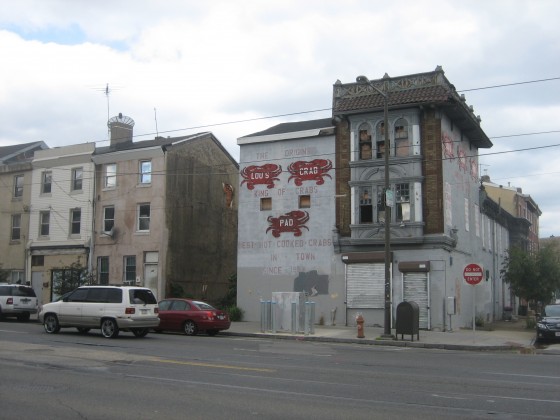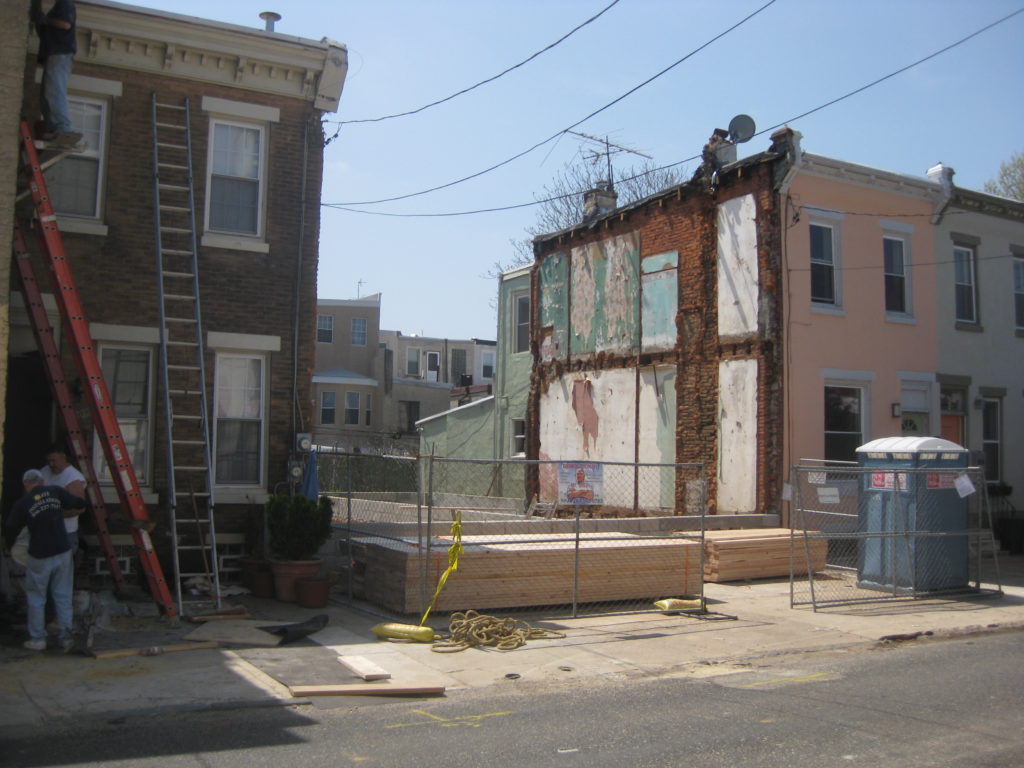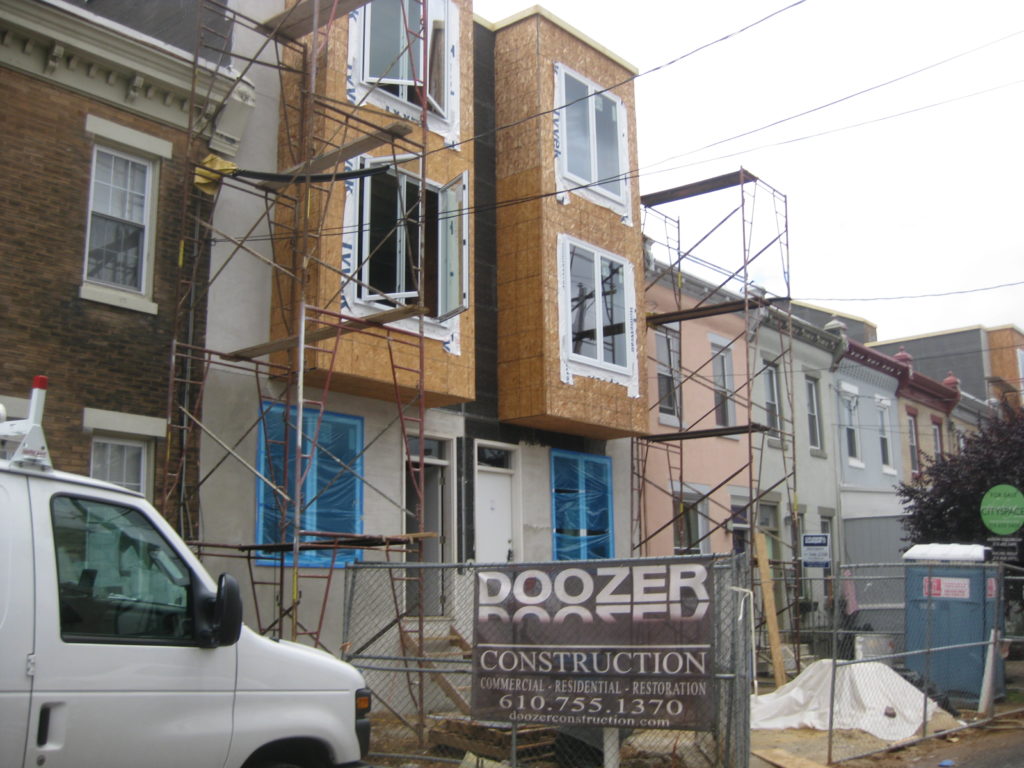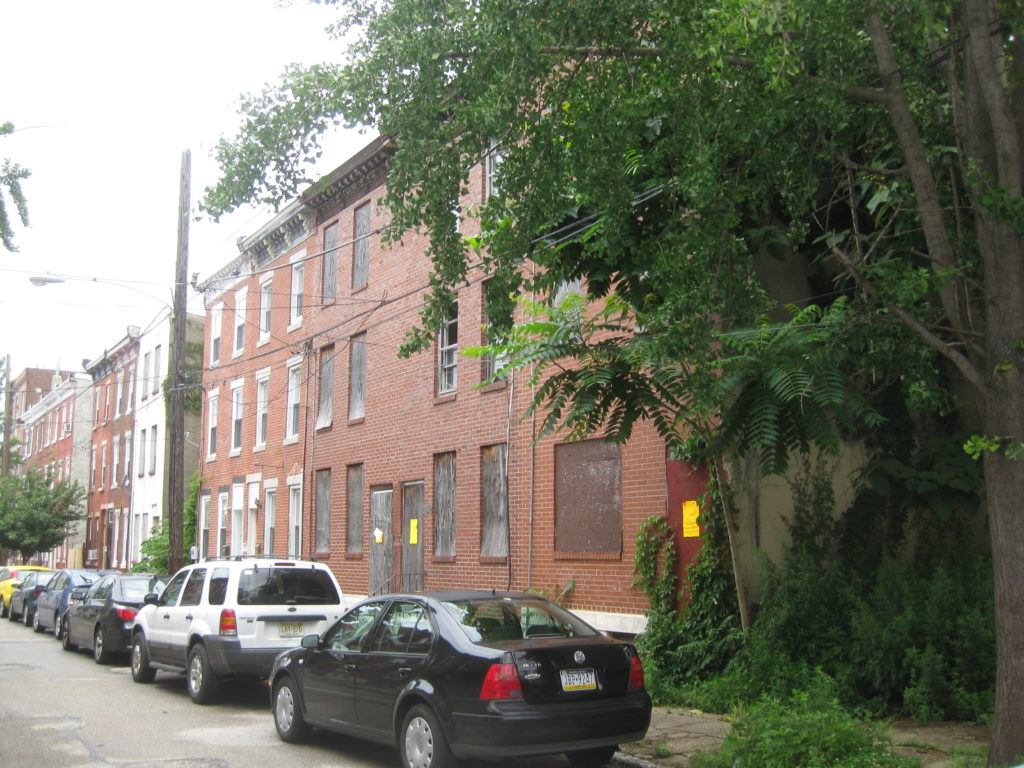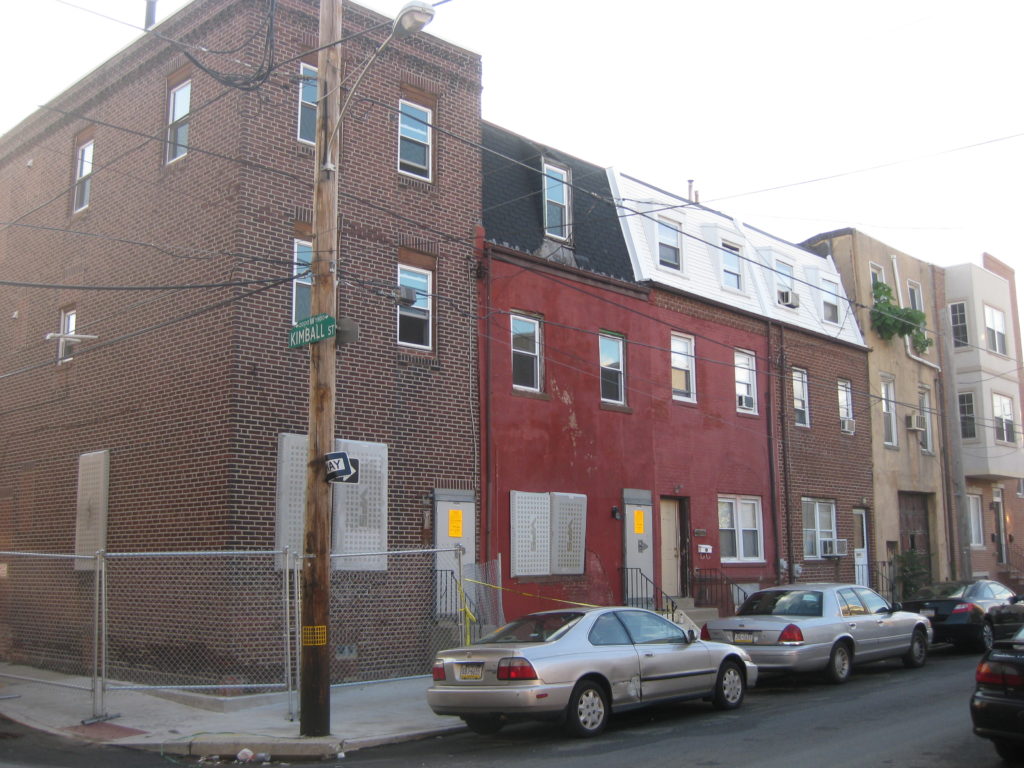Right around Christmas time, we first told you about plans for ten new homes scattered over four blocks of Cambridge Street on the Fairmount/Brewerytown border. This project was to involve a partnership between developers MMPartners and Fairmount CDC purchasing blighted PHA properties, and redeveloping them into nine market-rate homes and one home to be sold at an “affordable” price to a buyer that meets certain income requirements.
A couple of months ago, we checked in on three of these homes of the 2800 block of Cambridge, which by then had been demolished, with reconstruction underway. We stopped by this block again earlier this week, and noted considerable progress. As you can see in the photos below, the homes are built, exterior work is progressing, with interior work surely taking place as well. The signs on the site would seem to indicate that the builders are Doozer Construction, a Center City based construction company.
Meanwhile, a block away, the project is set to move onto the second phase. Last week, the developers received approval from the ZBA to demolish and rebuild three additional homes at 2709-13 Cambridge St.
No doubt, the elimination of these blighted properties will mean wonderful things for the block and the entire neighborhood. This sort of thing only increases our frustration with the upcoming PHA surplus property auction, which totally ignores neighborhoods like Fairmount and Brewerytown which contain numerous vacant and blighted PHA properties. Instead, the auction list almost exclusively includes low-value properties in North Philadelphia. Not that those neighborhoods wouldn’t benefit from the sale of those lots, but 1) we question whether some of the parcels up for auction will even sell, and 2) we’d guess that selling higher-value lots and buildings would allow PHA to fix up more blighted properties across the city, which would benefit many additional neighborhoods.
Perhaps we should stop dreaming of PHA auctioning off properties like those on Cambridge Street, and we should start hoping that more developers and CDCs are able to successfully collaborate to exact the kind of change that we’re looking for. Thanks to the model presented by Cambridge Row, we’d say the idea should be planted with many organizations, hopefully to sprout in the years to come. If we may suggest test case number two?

